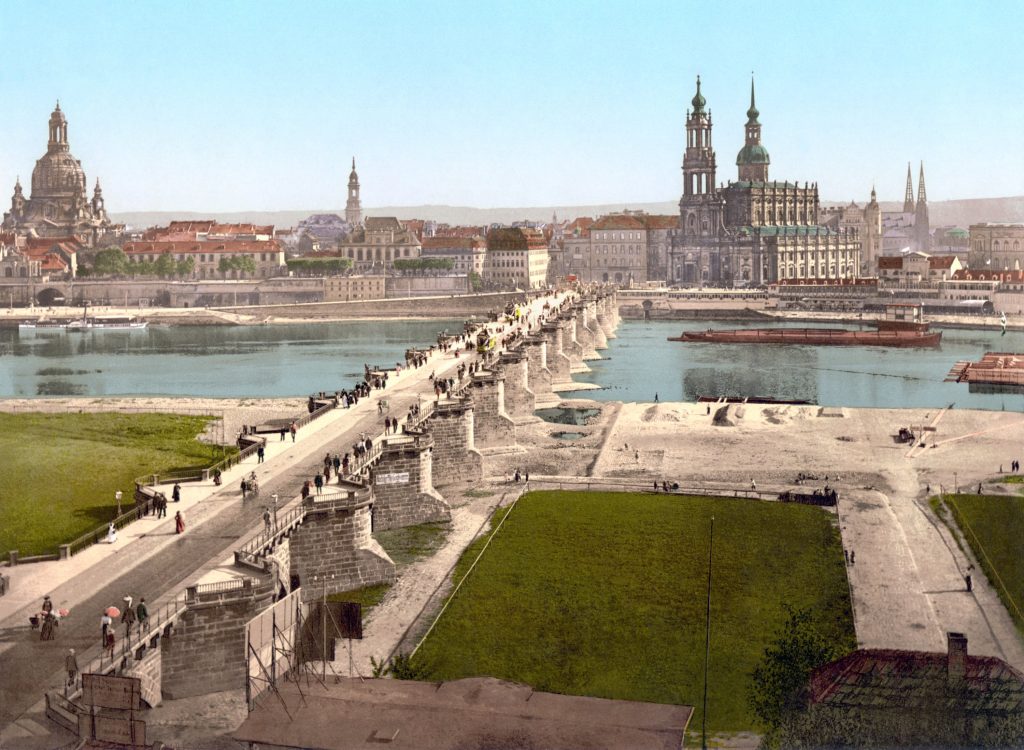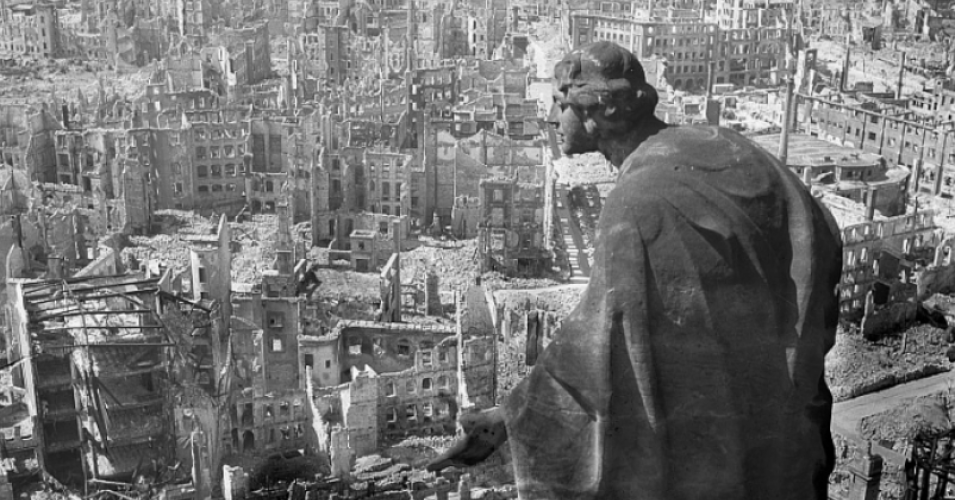75 years ago this February, Allied bombers flew over the Saxon town of Dresden in eastern Germany, raining death and destruction from above. Over the course of two terrifying nights, upwards of 25,000 people were killed and the city that was once known as a”jewel box” was reduced to ash.
While many people focus on the ground war of battles like D-Day, the Bulge, or Stalingrad, a case can be made that World War II was a war for the skies and that bombers were the most important military units.
Bombing changed how people experienced war. The sound of an air raid siren could send children and families frantically running for a shelter in the middle of the night. Thousands of feet above, bombing crews were both too far from their targets to feel honor in their attack and too close to ignore the destruction–themes and emotions felt throughout books like Joseph Heller’s Catch-22.
While we often remember WWII for the atrocities committed on civilians. It’s easy to forget just how much bombing blurred the lines between civilian and military targets. The allied bombing of Dresden embodied much of this blurring.
The city of Dresden was known as one of the most beautiful in the Elbe Valley. With stunning Baroque architecture and a rich history, it was a cosmopolitan town. Dresden had always been an important transportation hub, but with Allied forces pushing their way across Europe, it also became a gathering place for refugees.
By February 1945, the British, American, and Canadian forces had a strong foothold in Western Europe. The D-Day landings had been successful in June 1944 and they pushed back Nazi counters at the Battle of the Bulge earlier that winter. Meanwhile, the Soviet Army was knocking on the door of Frankfurt.
To help the Red Army move forward, Royal Air Force (RAF) and United States Army Air Force (USAAF) decided to target Dresden. The plan was to use the might of 796 Lancaster (RAF) bombers to pound the industrial and transport hub into oblivion. The RAF struck first on the night of February 13.
Church bells rang their warning in the cold middle of the night and as the fires drew closer, many children thought it looked like Christmas tees. Meanwhile, bomber crews sweat through their uniforms as the inferno thousands of feet below swelled so much that it heated their planes. By the time the bombing was done, around 25,000 people were dead–most of them civilians–and the “jewel box” was no more.

Immediately Allied commanders and civilians expressed dismay. An American reporter commented that at last, the Allies had joined in the practice of “terror bombing.” Not long after, Winston Churchill sent a memo to his Chiefs of Staff, stating “It seems to me that the moment has come when the question of bombing of German cities simply for the sake of increasing the terror, though under other pretexts, should be reviewed.” [1]
But remembering the horrors of Dresden and similar bombing campaigns isn’t simple…
Soon after the attacks, the Nazi government began spewing out propaganda calling the bombing a terrorist attack. Joseph Goebbels, Reich Minister of Propaganda went into full spin mode, accusing the allies of committing wartime atrocities and artificially inflating the reported number killed at Dresden, claiming a hundred thousand civilians dead.[2] They did this for one purpose only: to seek sympathy and downplay the Holocaust.
Unfortunately, we are not finished with this propaganda. With modern neo-Nazi and far-right groups growing, this propaganda is appearing again 75 years on. Far-right groups in Germany and across the world continue to appropriate Dresden’s history. They downplay the atrocities committed against Jews and other groups while holding up the victims of Dresden as Aryan martyrs. These neo-Nazi supporters can even be found in the U.S.[3]
It shouldn’t be surprising or odd to state that World War II brought out some of the worst in humanity. While I say this in no way to diminish the war crimes committed by the Axis powers, the Allied armies were not angelic and perfect. Commanders, soldiers, pilots, and civilians were all still humans and fallible.
Memory even played a pivotal role in shaping the decision to destroy Dresden and the following reaction. Many Brits claimed they were retaliating “for Coventry”–referencing the destruction of cultural and historic sites in Coventry, England by Nazi bombers five years earlier. Debates over destroying cultural sites still rage today.[4]
The city of Dresden has recovered, but we are still grappling with its legacy. The thunderous echoes of bombs long since dropped still ring in our ears. What we hear from them is a warning as we debate how to approach things like strategic bombing and threats to civilians. Just as important, we need to be careful in how we remember events like these, lest we fall into traps set out for us 75 years ago.

- Detlef Siebert, “British Bombing Strategy in World War Two,” BBC, Feb. 2, 2017, http://www.bbc.co.uk/history/worldwars/wwtwo/area_bombing_01.shtml
- Melissa Eddy, “75 Years On, Dresden Recalls the Images of War and the Echoes of History,” New York Times, Feb. 13, 2020. https://www.nytimes.com/2020/02/13/world/europe/dresden-germany-anniversary.html
- Ibid. Also, see Sinclair McKay, “75 Years After the Dresden Bombings,” History News Network, Feb. 16, 2020, https://historynewsnetwork.org/article/174322; and McKay, “Dresden. 75 years on.” History Hit Podcast, Feb. 8, 2020, https://play.acast.com/s/dansnowshistoryhit/61fd8977-28e5-43b0-83de-180ad2ffd6f7
- Laurel Wamsley, “Trump Says He’ll Target Iran’s Cultural Sites. That’s Illegal,” NPR, Jan. 6, 2020, https://www.npr.org/2020/01/06/794006073/trump-says-hell-target-iran-s-cultural-sites-that-s-illegal
Leave a Reply